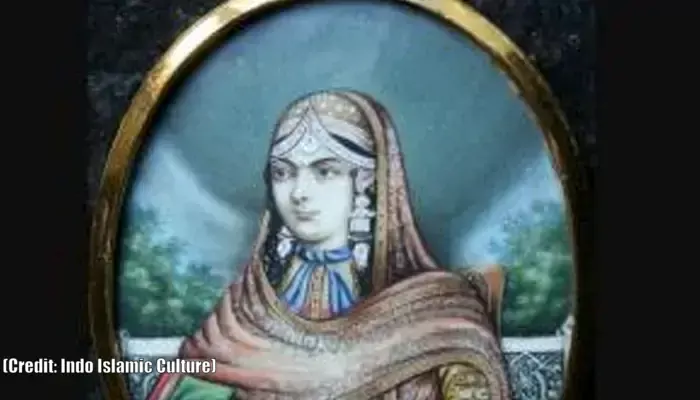Not wars, not weapons...sometimes a marriage was all it took to unite kingdoms or bring them crashing down.
They say everything is political. And by everything, it literally means everything, even human relationships. Marriages, too, have often served political purposes throughout history. And nowhere is this more evident than in royal alliances. Especially in India, royal weddings were less about love or tradition and more about power plays. And it would not be even an iota of an exaggeration to say that a single marriage could change the course of history.
In this story, let’s explore some of India’s most significant royal marriages that not only joined two people but also made (and sometimes broke) entire empires.
For many Indian rulers, marriage was the smartest weapon in their arsenal that didn’t spill blood but still conquered land. The most famous example, of course, is Emperor Akbar’s 1562 marriage to Hira Kunwari, daughter of Raja Bharmal of Amber (now Jaipur), which was a calculated alliance. By bringing a Rajput princess into the Mughal fold, Akbar secured the loyalty of a powerful clan, and soon after, Rajput nobles like Raja Man Singh rose to prominence in his court and army. As historian John F. Richards puts it, “Akbar’s Rajput alliances, cemented through marriage, were pivotal in stabilizing Mughal rule across diverse regions.”
The Marathas, too, used such alliances as glue to hold their vast confederacy together. The Scindias of Gwalior and Gaekwads of Baroda, two prominent families, frequently used arranged marriages to consolidate their power in the 18th century. Similarly, Shivaji’s grandson Shahu married into the Bhonsle family, strengthening ties between branches of the Maratha dynasty. These strategic unions helped avoid infighting and created a united front against common enemies.
In a country fragmented by warring kingdoms and old grudges, sometimes a wedding was the only way to stop the bloodshed. When Rao Jodha’s daughter, Shringar Devi, married Rana Kumbha’s son Raimal in the 15th century, it brought an uneasy peace between the Rathores of Marwar and the Sisodias of Mewar. The two Rajput clans had been at loggerheads since the assassination of Ranmal by Rana Kumbha. This marriage turned a deep feud into an alliance that allowed both dynasties to focus on strengthening their kingdoms.
Another example comes from the Mughal court: Akbar’s 1570 marriage to Princess Nathi Bai of Jaisalmer. While less talked about than his union with Hira Kunwari, this alliance was equally important in stabilizing relations with Rajput states in western India. As historian Satish Chandra notes, “Akbar’s matrimonial alliances with Rajputs were less about conquest and more about creating a network of mutual trust.” These were diplomatic gestures wrapped in wedding rituals.

Akbar’s Rajput marriages also carried a powerful symbolic message: a Muslim emperor embracing Hindu allies through family bonds. His policy of Sulh-i-Kul (universal peace) was practiced through his personal life. His Hindu wives were allowed to follow their faith, and their families were often given high positions in the Mughal administration.
This cultural blending showed up in the empire’s art, literature, and architecture; for example, the Indo-Islamic design of Fatehpur Sikri or the fusion seen in miniature paintings. These alliances projected an image of unity in a religiously diverse empire.
But not all interfaith royal marriages were welcomed. The marriage of Peshwa Bajirao I to Mastani, daughter of the Bundela king Chhatrasal and a woman of mixed Hindu-Muslim heritage, created a serious backlash. Though politically smart, it ensured Bundela support for Bajirao’s campaigns. The Maratha elite saw Mastani as an outsider. She was denied recognition, and their son Shamsher Bahadur struggled for acceptance.
These marriages reveal a tension. While some were hailed as bridges between faiths, others exposed deep-rooted divisions that even royal power couldn’t always heal.
Not all royal marriages were part of a grand plan. Some were emotional decisions that carried unintended political fallout. One such story is that of Indira Devi, the spirited daughter of Sayajirao Gaekwad III of Baroda. In 1913, she defied royal protocol and eloped with Jitendra Narayan of Cooch Behar. While romantic, the move stunned political circles. It weakened the Gaekwad family's standing among princely states and was seen as undermining their traditional authority during a critical time in the freedom movement.
Then there’s the much-debated legend of Prince Salim (later Jahangir) and Anarkali, the courtesan. While historians continue to debate her existence, the story endures as a cautionary tale of passion threatening palace politics. In some versions, Akbar disapproved of the affair, fearing it would destabilize court loyalties and public image. Whether myth or reality, the story reflects the dangers of personal desire in a world governed by strategy.
For dynasties, preserving lineage was paramount, and that's sometimes more so than peace. Marriages were used to keep bloodlines “pure,” consolidate internal power, and prevent rival claims to the throne. One such example is Vijaya Raje Scindia’s marriage to Jiwajirao Scindia of Gwalior in the 20th century. A Rajput princess from Nepal’s powerful Rana dynasty, she brought both prestige and political capital. Their union blended Rajput and Maratha bloodlines, reinforcing the Scindias' elite status at a time when princely India was transitioning toward democracy.
On the other hand, the refusal of the Sisodias of Mewar to marry their daughters into the Mughal harem was a matter of proud defiance. Rana Udai Singh and his successors saw it as a matter of honor. But that pride came at a cost. After Mewar refused Akbar’s matrimonial overtures, the Mughal army laid siege to Chittorgarh in 1568. The Rajputs were defeated, and their women famously committed jauhar (a mass self-immolation to avoid capture). The resistance preserved honor, but it also weakened Mewar’s influence for generations.
As historian Bamber Gascoigne once observed, “In India’s royal courts, a marriage was never just a marriage; it was a pact that could crown or crush a dynasty.” Behind every garlanded couple, there was a gamble, and one truth: empires could rise or fall, all for the sake of a single match.